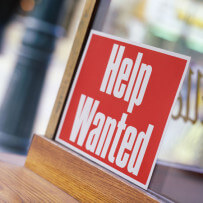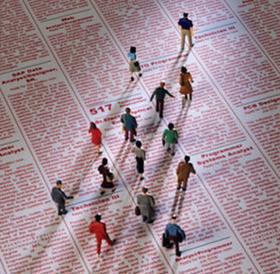Though the nation’s jobless rate has been falling over the last year, New York State’s has been growing abruptly, giving a challenge to Gov. Andrew M. Cuomo as he attempts to build an image as a economic centrist who can change the state’s business climate.
Over the last 12 months, New York has been the only state with a statistically significant increase in its jobless rate, as per the Bureau of Labor Statistics. From August, the state’s rate had ascended to 9.1% from 8.2% when Mr. Cuomo took office in January 2011, a reversal of the national trend, as said by the federal household survey.
In every corner of the state, there are trouble spots. In the Bronx, the unemployment rate is about 14%. Along Lake Ontario, the rural Orleans County, lessening manufacturing jobs and government payrolls have pressed unemployment to more than 11%. In St. Lawrence County, in the northern Adirondacks, the rate is also 11%.
The Cuomo administration, supported by some economists, argues that New York’s economic picture is more precisely reflected by other, more positive data. They point to a federal payroll study that illustrated New York doing well, relatively speaking – with jobs increasing by 1.4% over the last 12 months, an above-average rate. Initial unemployment compensation claims have also been dropping.
“Simply relying on the household unemployment survey does not paint an accurate or complete picture of job creation in New York State because the sample used in that survey is inadequate,” said Richard Bamberger, a spokesman for the governor.
“Under Governor Cuomo’s leadership, jobs are being created at the fastest rate in four years, and the proof is in the numbers,” he added, citing falling unemployment claims. “New York has regained all of the 324,000 private-sector jobs lost in the recession,” Mr. Bamberger said.
But for a governor often discussed as a 2016 presidential candidate, the rising unemployment rate, which is based on a national review of households, could be the statistic that prompts a thousand political ads if the trend lasts – Mr. Cuomo’s potential opponents, after all, are improbably to highlight the contradictory economic data.
“Certainly, this would come under scrutiny if he ever ran for president,” said Don Dutkowsky, an economist and professor at the Maxwell School of Syracuse University. “But there is a sense that he’s taking hold of some real challenges and trying to move forward, and that’s something we wouldn’t mind seeing on the national stage either.”
Unemployment data from the national household survey has become of a fetish in the present presidential race. Mitt Romney had attacked President Obama for failing to bring down the national unemployment rate below 8%; it did fall to 7.8% in September.
Economists provided a range of theories about the causes that jobless and payroll numbers diverged in New Your City, statewide and, to a lesser extent, in parts of the Northeast. There are prominent variations between the surveys: the jobless data is based on a household survey that reaches the self-employed and people who work in agriculture, but the payroll survey is not. Some said the unemployment survey had limitations, mainly the relatively small number of people interviewed — about 2,330 in New York State.
Others dismissed those concerns and said the numbers needed to be carefully observed.
“It’s something to keep an eye on,” said David Hitchcock, the primary New York State analyst for Standard & Poor’s.
But he said he was encouraged by data displaying ongoing private-sector job growth. Standard & Poor’s has an AA rating for New York — Mr. Hitchcock called that an “average rating for the average state” — and also a positive outlook.
“It’s not good if the unemployment rate goes up,” he said.
“But if it looks like a temporary thing and private-sector job growth is continuing,” he added, “one would hope it would level off and come down again. If it doesn’t, then I think there’s something more fundamental going on.”
According to Marisa DiNatale, an economist at Moody’s, the jobless numbers might miss some downstate population growth, while the more positive payroll numbers “seem to be supported by other economic data coming out of the state that looks pretty good.”
“Certainly the economy has slowed in New York, and the pace of job growth has slowed,” she said.
And James A. Parrott, chief economist at the labor-backed Fiscal Policy Institute, said: “Unemployment is still a problem, but it’s not as bad as the unemployment rate suggests.”
“The recovery is not as strong as it could be,” he said, adding that much of the job growth has come in low-paying industries, like retail, restaurants and home health care.
Two senior officers at the New York Federal Reserve Bank, in a blog item posted on the Fed’s Website last month that concentrated on the New York City economy, explored and dismissed a few probable descriptions for the divergence between the joblessness and payroll data.
“While there are several potential explanations, the stagnation of resident employment remains largely a puzzle,” wrote Jason Bram, a senior economist, and James Orr, an assistant vice president in the regional analysis group.
“There seems to be no single overriding explanation for the gap between the two employment measures,” they added. “Other indicators of the city’s economy are indicating a healthy recovery, particularly the low office vacancies and rising rents.”
Mr. Cuomo has talked often of the prominence of job creation and financial development, but he has been in office less than two years, so the effect of some of his initiatives may not yet have been fully felt. He has governed as a fiscal centrist, defending laws that forced a cap on property tax increases and lowered pension benefits for new state workers. This month, he has been directing bus trips around the state to show off monetary development projects getting state aid.
But he has his work cut out for him. While the state budget is finally coming under control after years of outsize shortfalls, a growing fiscal crisis among New York’s municipal governments is possibly to put the state under stress. Last week, the Tax Foundation, a nonpartisan research group, graded New York last amongst the 50 states for its business climate, while the conservative Cato Institute gave Mr. Cuomo a “D” grade in evaluating his tax and spending record.
In a radio interview previous week, Governor Cuomo’s top aide, Lawrence S. Schwartz, said the reports were “more based on ideology and not facts,” adding that the groups “took a bunch of data sets and manipulated them to fit their worldview.”

